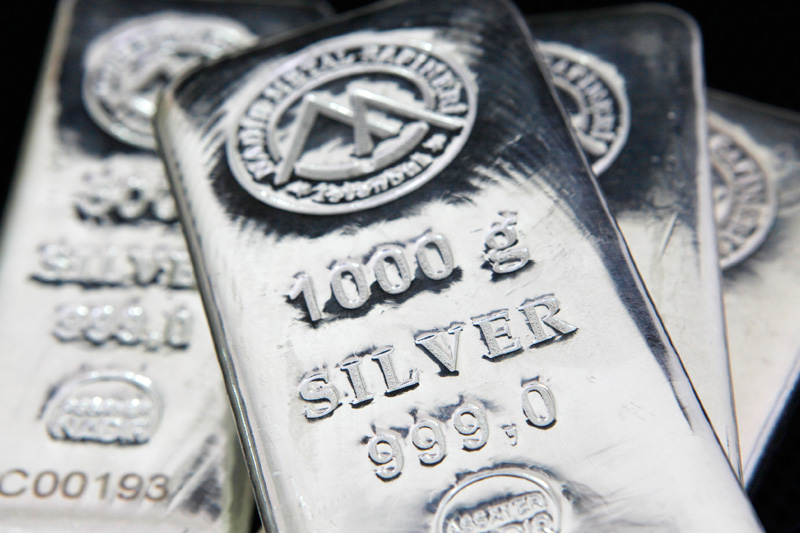Commodities
Silver prices plunge amid Powell’s hawkish stance and stronger dollar


Silver experienced its most significant drop recently, pressured by Federal Reserve Chair Jerome Powell’s hawkish comments and a strengthened U.S. dollar, which has led to an improved risk appetite among investors. Jerome Powell indicated that interest rates could rise if inflation remains above the Fed’s target, causing a surge in the dollar’s value and putting downward pressure on silver prices. The market is now closely watching for upcoming data on consumer price inflation and retail sales.
Although there was a brief moment of dollar weakness due to some dovish interpretations of Powell’s earlier remarks this month, the overall market sentiment has remained cautious. Traders of Fed funds futures are now estimating a 22% likelihood of an additional rate hike by January, as global inflation concerns persist and the possibility of further monetary tightening looms.
Adding to the bearish outlook for silver, the yield on the 10-year U.S. Treasury note has climbed, reflecting investor worries about future inflation and monetary policy directions. A recent lackluster demand at a 30-year bond auction also hints at long-term economic outlook concerns. The near-term forecast for silver seems to be pointing downward unless there is an escalation in geopolitical tensions or disappointing economic reports from the U.S.
This article was generated with the support of AI and reviewed by an editor. For more information see our T&C.
Commodities
Oil prices rise; U.S. crude inventories plunge, Russia-Ukraine truce eyed
Commodities
India’s Reliance to stop buying Venezuelan oil over US tariffs, sources say
Commodities
Oil prices climb on Venezuela supply worries

 Forex3 years ago
Forex3 years agoForex Today: the dollar is gaining strength amid gloomy sentiment at the start of the Fed’s week

 Forex3 years ago
Forex3 years agoUnbiased review of Pocket Option broker

 Forex3 years ago
Forex3 years agoDollar to pound sterling exchange rate today: Pound plummeted to its lowest since 1985

 Forex3 years ago
Forex3 years agoHow is the Australian dollar doing today?

 Cryptocurrency3 years ago
Cryptocurrency3 years agoWhat happened in the crypto market – current events today

 World3 years ago
World3 years agoWhy are modern video games an art form?

 Commodities3 years ago
Commodities3 years agoCopper continues to fall in price on expectations of lower demand in China

 Economy3 years ago
Economy3 years agoCrude oil tankers double in price due to EU anti-Russian sanctions























